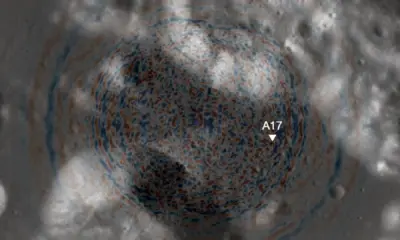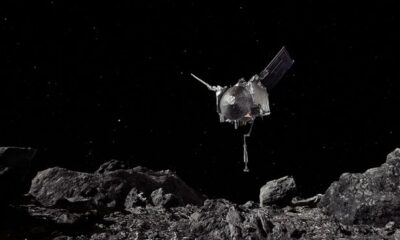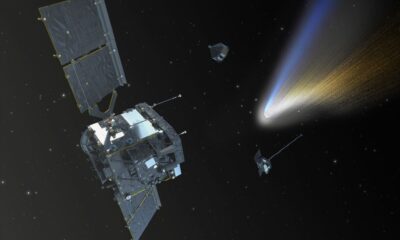Science
Tackling Lunar Dust: Solutions for Future Moon Missions

The challenge of dealing with lunar dust is becoming increasingly significant as space agencies plan for long-term missions on the Moon. Experts emphasize that addressing this issue is essential for the success of future lunar operations, including NASA’s upcoming Artemis program.
Lunar dust, composed of fine, abrasive particles, poses severe risks to equipment and human health. Its unique characteristics make it cling to surfaces and create complications during activities such as landing and exploration. According to a report by the European Space Agency (ESA), the dust can damage sensitive equipment and reduce visibility, complicating operations significantly.
Innovative solutions are being explored to mitigate these challenges. One promising method is the use of 3D printing technology to create landing pads. By constructing these pads in advance, space agencies can minimize the disturbance caused by rocket landings, which often results in dust clouds that can affect both the landing craft and surrounding areas.
Additionally, researchers are investigating the application of liquid nitrogen as a means to manage dust accumulation on clothing and equipment. The rapid cooling properties of liquid nitrogen could effectively dislodge lunar dust, ensuring that astronauts remain safe and their gear functional during missions.
As plans for sustained human presence on the Moon progress, the importance of addressing lunar dust cannot be overstated. The challenges posed by this material are not merely technical; they also have implications for astronaut health and mission success. For instance, prolonged exposure to lunar dust may lead to respiratory issues, necessitating adequate protective measures.
The Artemis program, set to launch in 2024, aims to return humans to the lunar surface and establish a sustainable presence by the end of the decade. To achieve these ambitious goals, NASA and its partners must prioritize research into effective dust management strategies.
In addition to the aforementioned techniques, other solutions are being considered. For example, dust mitigation systems integrated directly into lunar vehicles could help keep equipment clean and functional, enhancing the efficiency of missions. Collaborative efforts between international space agencies are crucial, as the challenges of lunar dust extend beyond national borders.
As interest in lunar exploration grows, so does the urgency to find effective solutions to the challenges posed by the lunar environment. Addressing the issue of dust on the Moon will not only facilitate successful lunar missions but also pave the way for future explorations of Mars and beyond.
With space agencies around the world investing in research and development, the path forward appears promising. The next steps will involve rigorous testing and validation of these innovative approaches, ensuring that astronauts can safely navigate and operate on the lunar surface in the years to come.
-

 Technology5 months ago
Technology5 months agoDiscover the Top 10 Calorie Counting Apps of 2025
-

 Health3 months ago
Health3 months agoBella Hadid Shares Health Update After Treatment for Lyme Disease
-

 Technology7 days ago
Technology7 days agoOpenAI to Implement Age Verification for ChatGPT by December 2025
-

 Health3 months ago
Health3 months agoErin Bates Shares Recovery Update Following Sepsis Complications
-

 Technology4 months ago
Technology4 months agoDiscover How to Reverse Image Search Using ChatGPT Effortlessly
-

 Technology3 months ago
Technology3 months agoElectric Moto Influencer Surronster Arrested in Tijuana
-

 Technology1 month ago
Technology1 month agoDiscover 2025’s Top GPUs for Exceptional 4K Gaming Performance
-

 Technology5 months ago
Technology5 months agoMeta Initiates $60B AI Data Center Expansion, Starting in Ohio
-

 Technology5 months ago
Technology5 months agoRecovering a Suspended TikTok Account: A Step-by-Step Guide
-

 Health3 months ago
Health3 months agoAnalysts Project Stronger Growth for Apple’s iPhone 17 Lineup
-

 Health5 months ago
Health5 months agoTested: Rab Firewall Mountain Jacket Survives Harsh Conditions
-

 Lifestyle5 months ago
Lifestyle5 months agoBelton Family Reunites After Daughter Survives Hill Country Floods





















